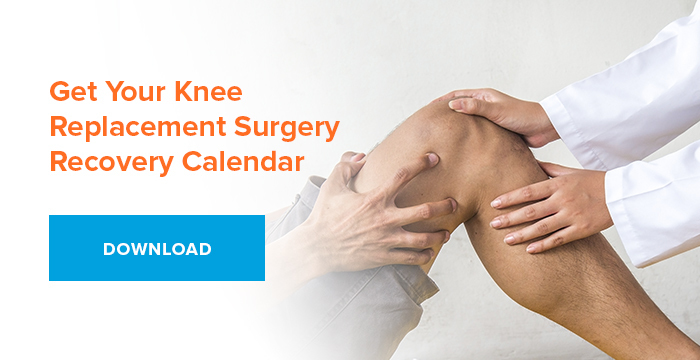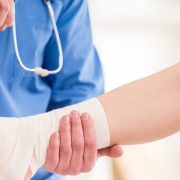
Knee Replacement Recovery Tips to Optimize the Healing Process
One of the most critical components of your knee replacement’s overall long-term success is the post-operative care. It will maximize your ability to return to the activities and lifestyle you enjoy with the goals of improved mobility, reduced pain and little to no discomfort.
It is essential that all knee replacement patients follow the rehabilitation plan prescribed by their doctor. What each knee replacement recovery plan entails, however, is unique to each patient’s needs. EmergeOrtho–Triangle Region’s board-certified, fellowship-trained Joint Replacement Specialists are experts in all aspects of knee replacement diagnosis, surgery, and recovery. Our patient-centered approach to care, coupled with our commitment to practicing the latest innovative advancements in subspecialty orthopedics, make us the top knee replacement leaders in the region.

Top Five Knee Replacement Recovery Tips
Our joint replacement experts share their top five knee replacement recovery tips that maximize the probability of a successful outcome.
- Prevent Blood Clots & Infection
Knee replacements are one of the most common successful modern surgeries with a success rate of over 90%. However, an infection can occur if bacteria enters the bloodstream and gets lodged around the knee replacement. Common ways bacteria enter the bloodstream are through:- Dental Procedures
- Urinary Tract Infections
- Skin Infections
- Unclean Wounds
Patients with certain risk factors may have to take antibiotics prior to dental procedures or other surgeries after knee replacement.
To prevent blood clots and decrease leg swelling, patients are immediately encouraged to move their foot and ankle following surgery in order to stimulate blood flow. Your doctor may also prescribe the following preventative measures to reduce the risk of blood clot formation:
- Special Support Hoses
- Compression Boots
- Blood Thinners
- Maintain a Healthy Diet
It is common to experience a loss of appetite for the first few weeks when recovering from knee replacement surgery, but a balanced, healthy diet can help speed the healing process. Your doctor will specify what the diet should entail, but it will usually include an iron supplement to promote tissue healing and restore muscle strength. Drink plenty of fluids and avoid alcohol until your doctor says. Maintaining a healthy weight is important in order to avoid putting extra stress on your healing knee joint. - Physical Therapy
Exercising the affected joint is critical to your recovery. In fact, most patients are encouraged to begin physical therapy almost immediately following their surgery. Once you are discharged from the hospital, you should schedule regular physical therapy visits with a licensed physical therapist. You will be taught specific exercises that will restore muscle strength and knee movement, getting you back to your normal daily activities as quickly as possible. - Exercise
Your doctor or physical therapist will most likely assign you critical at-home exercises to regularly perform multiple times a day. This can include specific exercises, a graduated walking program, and/or normal household activities. If you perform the exercises exactly as instructed, you should be able to resume normal daily activities as quickly as possible after surgery. - Prepare Your Home
In order to provide yourself with a more comfortable and manageable post-operative experience, it is advised that you make modifications to your home
prior to surgery. Given that it may be difficult to use the stairs during the early stages of your recovery, you may consider picking one floor to live on, although you will learn how to navigate stairs before you leave the hospital. This may mean temporarily transforming a living room into a bedroom. Other tips include:- Having secure handrails to help you balance.
- Removing any rugs, cords, or other loose items that you could trip on.
- Making sure you have a strong, firm chair to sit on, as well as a footstool for intermittent leg elevation.
It is imperative that you avoid falling after surgery. A fall could damage your knee and result in the need for further surgery. Assistive devices may be prescribed if needed to help with balance, strength, and flexibility.
The Best Knee Replacement Recovery Practices Are Found at EmergeOrtho–Triangle Region
The Joint Specialist Team at EmergeOrtho–Triangle Region is prepared to answer any of your knee replacement recovery questions or assist you with any of your recovery needs. self-schedule an appointment now to schedule an appointment at one of our locations or contact us at (919) 220-5255.







